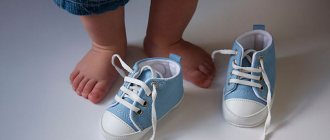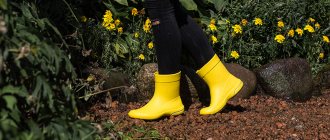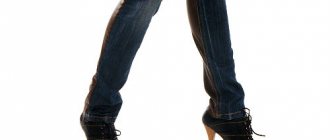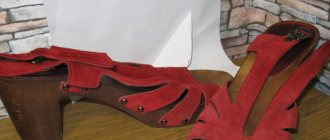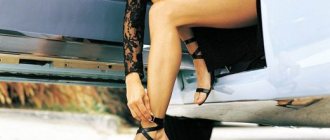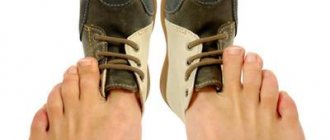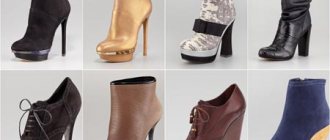Italian manufacturers
Many people associate this country with such material as genuine leather, and for good reason. Not only clothes, but also shoes made of excellent quality leather can be found from Italian manufacturers.
The Alba company produces footwear products for residents of large cities.
- The entire range can be divided into three lines: classic style, everyday options and trendy solutions.
- You'll love Alba's shoes and boots if you're looking for something truly unique in design, but don't want your outfit to be too fussy or busy.

Vitacci is an Italian-Russian company whose hallmark is high-quality materials and animal prints.
- The company's products are quite affordable, but the product is not lacking in reliability.
- The brand's designers love to decorate their models with stones, rhinestones, perforations, embroidery and even fur.
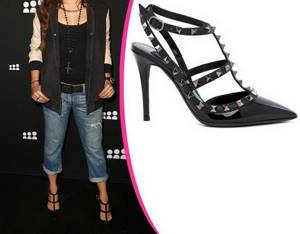
The most popular model from Valentino is the pointed-toe stiletto pumps.
Shoes from this brand are easily recognizable by their straps with flat metal spikes, thanks to which the classic model becomes original.
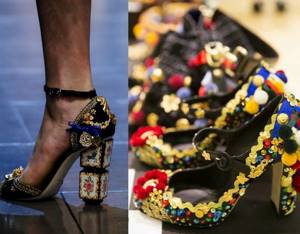
For lovers of bright and eye-catching design, we can safely recommend Dolce & Gabbana products.
Large gemstones, rhinestones, embroidery, appliques, leopard print, mesh inserts make each pair a masterpiece.
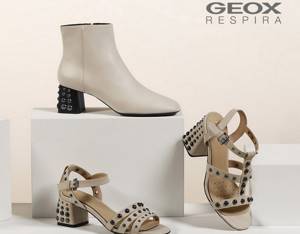
Breathable, waterproof and comfortable shoes from the GEOX brand are presented in a wide range of models for every season.
Prices are quite affordable, and wear-resistant materials make sandals, shoes and boots durable.
The impeccable quality and sophisticated design of products from Italian manufacturers will not leave anyone indifferent. I am glad that branded products can be purchased not only in Italy, but also in Russia.
Assessment (examination) of footwear quality
Category: Clothing
When examining the quality of leather shoes, the following methods can be used: organoleptic, measurement, sociological, expert, calculation, as well as the trial operation method (socks).
Organoleptic method
The organoleptic method is widely used to control the quality of shoes supplied to trade organizations, at the request of organizations and individuals.
Examination of the quality of footwear, carried out by experts from the Chamber of Commerce and Industry, is carried out at the request of interested organizations and individuals. The application is submitted in writing and can be one-time or long-term. Based on the application, the expert is issued a work order in the established form, which specifies the tasks of the examination. These may include defining:
♦ quality for defects in appearance in accordance with the requirements of contracts and regulatory documentation;
♦ percentage reduction in the quality of shoes due to the presence of defects;
♦ percentage markdown.
The examination of the quality of footwear is carried out in accordance with the requirements of the technical conditions of the contract, regulatory documentation, Instructions on the procedure for checking the quality and quantity of goods by experts of the Chamber of Commerce and Industry of the Russian Federation.
Acceptance of footwear is carried out in accordance with the requirements of GOST 9289.
According to the requirements of regulatory documentation, leather shoes must correspond in appearance, materials, design and method of attaching the sole to the approved procurement sample (technical description of the shoe model).
Labeling and packaging must comply with GOST 7296.
All parts of the same name in a pair must be identical in density, thickness, shape, size, color and pattern.
The materials used for the top and bottom of shoes, linings, special cardboards and thermoplastic materials for intermediate parts must comply with quality I standards of GOST standards and technical conditions (TU).
The materials of the top and bottom of winter shoes and fastening methods must be designed for wear at temperatures down to -30°C, PVC shoes - -20°C while maintaining the elasticity of the top.
Lining materials must have:
♦ dyeing, resistant to dry and wet friction;
♦ well-polished mesh side of leather for unlined shoes;
♦ lining made of natural or artificial fur with dense, even-height pile;
♦ processed, in accordance with the contract specifications, the top edge and the front edge of the workpiece and lining;
♦ well-glued lining at the joints in the absence of thread seams;
♦ clean shoe upper, without stains, folds, wrinkles, cracks, shedding of the coating, tears in the leather along the stitching and odor;
♦ the edges of the top and lining parts, evenly lowered along the fastening line, are clean and smooth;
♦ parts of the shoe upper, fastened with shoe threads, providing the required fastening strength.
Tack seams must be carefully smoothed, stitched or taped. Decorative fittings, embellishments and fasteners are firmly and symmetrically fastened. The stitching connecting the parts must be smooth, clean, without skipped stitches or broken threads. The stitches are uniform, well tightened, at the same distance from the edge of the parts and parallel to each other, the ends of the threads are secured and trimmed. The lining is well stretched, without tears, folds, dirt, cracks or shedding of the coating.
The shape, width, height and length of the shoe parts must be the same in both half-pairs. The toes and heels of the shoes are elastic and shape-resistant, well molded. The backs should be stable along the entire perimeter, except for the upper part at a distance of 18-20 mm from the edge and in the wings at a distance of 18-25 mm from the ends, well glued to the top and lining of the shoes. Insoles - match the contour of the footprint, do not have folds and are well glued; the surface of the insole inside the shoe is flat, smooth, without protruding nails or staples, corresponding to the footprint of the last in contour and size. The bottom parts should fit tightly to each other and to the top parts, without gaps or crevices. The edge of the sole and the side surface of the heel are processed, painted and finished according to the material of the sole and heel.
The open edge of the sole should extend evenly beyond the footprint of the shoe. The surface of the sole is smooth, without overlapping intermediate parts. Heels in a pair are identical in shape, length, width and height. The heels must be well secured to the heel and allow for repair.
Examination of the quality of shoes by appearance, absence or presence of defects is carried out using the organoleptic method. Groups of defects are given in GOST 27438.
The quality of shoes is determined by the tolerance of defects. Check both half pairs of shoes. Quality is judged by the worst half pair.
When monitoring the quality of shoes by the organoleptic method, various instruments and simple measuring devices are used to determine the linear dimensions of shoes - height, length of shoes, length and width of soles and insoles, width of the tops of boots and tops of boots, height, heel, raised toe of the shoe, length and skew of socks, height and skew of backs, skew of ankle boots and back of outer belts.
If discrepancies in quality are detected, an examination report is drawn up.
Measuring methods
If the organoleptic assessment does not make it possible to make a final conclusion about the quality of the shoes, the expert selects control samples of the shoes being tested. To check the physical and mechanical properties, a sample is taken from the total number of shoes in the batch in the following volumes:
♦ to determine the general and residual deformation of the toe and heel, determining linear dimensions, flexibility and weight - 0.1%, but not less than one pair;
♦ to determine the strength of fastening of shoe parts, seams of blanks, fastening of heels, soles and heels, thickness of parts - 0.05%, but not less than one pair;
♦ to determine the water resistance of shoes - 0.2%, but not less than two pairs. Sampling is carried out directly by the expert or under his supervision by a representative of the customer of the examination. The selected samples are usually packed in plastic bags and sealed or sealed with the seal of the examination department of the Chamber of Commerce and Industry. Then the shoe samples, along with labels filled out by an expert and a sample selection report, are sent to an independent laboratory for testing. The sampling report must indicate the indicators that the laboratory must determine, for example, water resistance, thread seam strength, etc.
The results of the analysis must be reflected by the expert in the examination report. The laboratory test protocol and the act of sampling footwear are attached to the examination report.
Determination of flexibility and weight of shoes
Flexibility and weight are among the most important indicators of the hygienic properties of shoes. Wearing excessively heavy shoes is accompanied by an increase in the body's energy consumption, rapid fatigue of a person, an increase in foot sweating and a deterioration in the microclimate in the shoes. The flexibility of a shoe also has a significant impact on its comfort. According to available data, the energy consumption of walking in stiffer shoes is significantly higher than the energy consumption of walking in flexible shoes. An increase in shoe rigidity is accompanied by an increase in the temperature of the skin of the foot and, in addition, can lead to a deterioration in its wear resistance. This necessitated the creation of shoes with optimal values of flexibility and mass, as well as the development of objective methods for assessing these properties of shoes.
Definition of flexibility.
There are a number of methods for determining the flexibility of shoes. All of them are based on telling the shoe to bend in bundles at a given angle and determining the effort expended on bending. Most often, the test is carried out using devices for a tensile testing machine, but sometimes special devices are used. Most methods provide for assessing the flexibility of shoes under static conditions under single bending or several repeated bends, and only in some methods this indicator is assessed under multiple bending conditions.
Among the known methods for assessing the flexibility of shoes under static conditions, two methods have received the greatest practical application, one of which involves the use of a device for a tensile testing machine developed in UkrNIIKP (GOST 9718), the second is based on the use of a device developed in the Czech Republic.
The device is equipped with a set of removable stops to ensure testing of shoes of different types and sizes. The shoe is bent at an angle of 25° with a constant bending arm of 60 mm. When the tensile testing machine is turned on, the lower assembly of the device lowers, and the shoes bend. As an indicator of flexibility, the ratio of the forces during the third bend of the shoe to the width of the sole at the bend site is used.
• Determination of mass.
The weight of shoes at the same size depends on the type and properties of the materials used, the design of the shoes and manufacturing features. It is determined by weighing each half-pair with an accuracy of 0.1 g. The weight of a half-pair of shoes is usually used as an indicator. However, in a number of countries, in addition to this, they use the relative mass indicator, which is the ratio of the mass of a half-pair in grams to the size
The weight of shoes is determined in accordance with GOST 28735.
Thus, methods for assessing the flexibility and weight of shoes, in contrast to the methods used to characterize other properties included in the complex of hygienic ones, are used not only in research aimed at creating shoes with a given flexibility or weight, but also when monitoring the standardization of manufactured shoes. Methods for assessing these properties are standardized. The domestic standard for the method of assessing the flexibility of shoes provides for the use of adaptation of the UkrNIIKP design to a tensile testing machine. When characterizing the mass of shoes, the most widely used indicator is the mass of half a pair of shoes.
Domestic standards regulate flexibility and weight indicators for the main types of footwear produced.
Determination of the total and residual deformation of the toe and heel
The ZHNZO-2 type device used in the domestic industry is one of the first devices that made it possible to replace the organoleptic assessment of the rigidity and elasticity of the toe and back with an objective assessment of general and residual deformation (GOST 9135).
The operation of the device is based on pressing a ball segment into the surface of the toe and heel parts of the shoe and determining the values of total and residual deformation. When testing men's, women's, boys' and girls' shoes, ball segments with a diameter of 24.5 mm are used, and children's and small children's shoes - with a diameter of 14 mm.
The heel of children's and small children's shoes is tested at a load of 50 N, for all other types - at a load of 80 N; when testing the toe box of men's and boys' shoes, the load is 80 N, women's, girls', school, children's and small children's shoes - 50 N. The heel is tested at a point located at the intersection of two lines, one of which connects the back seam of the workpiece and the end of the heel wing, passing along its middle, and the second connects the upper edge of the backdrop and its edge at the sole. The load application point when testing the toe is located on the middle longitudinal line of the toe at an equal distance from the edge of the toe and the edge of the tightening edge. When testing the backdrop, it is carried out both from the outside and from the inside.
The shoes fixed in the device are installed so that the point marked on the shoe is located under the ball tip, then by smoothly turning the handle, the corresponding load is transferred to the ball tip, pressing it into the surface of the shoe. The shoes are kept under load for 30 s and the amount of total deformation is noted using an indicator, after which the load is removed. After 3 minutes, during which the shoes are without load, the ball tip (also without load) is lowered to the same point and the amount of residual deformation is noted.
The total deformation indicator is used to characterize the rigidity of the toe cap and heel of the shoe, the residual deformation value is used to assess the elastic properties of these parts. The indicators obtained when testing by this method are regulated by regulatory and technical documentation for the main types of footwear produced by the domestic industry.
Determination of the fastening strength of the top parts
To a certain extent, the correctness of the workpiece assembly operations can be judged by the appearance of the fastenings of the shoe upper parts. The frequency of stitches, the number of their rows and the distance between them, the nature of the tightening of the seams and the degree of filling of needle punctures with thread can be set by eye. However, only a laboratory analysis of the shoes can give a comprehensive description of the strength of the fastenings of the upper parts.
The method for determining the fastening strength of top parts is given in GOST 9290.
When testing all types of shoes, with the exception of boots, rectangular samples measuring 45x40 mm are cut out of the workpiece (the smaller side is located along the stitching); the dimensions of the working part of the sample are 25×40 mm. If the lining is caught by the seam, the sample is cut out along with it. When testing boots, the size of the sample with stitching is 45x25 mm (the smaller side is located along the stitching), and its working part is 25x25 mm. To test the strength of the seam connecting the back strap to the boot, a sample 100 mm long and 25 mm wide is cut out, which should be located at a distance of 5 mm from the edge of the hard heel.
When characterizing the strength of thread joints of a workpiece, two indicators are used: seam strength P (the ratio of the load in newtons at break to the length of the stitch in centimeters); seam strength coefficient K,
representing the percentage ratio of the strength of a stitched sample to the strength of the corresponding unstitched samples.
The strength indicator is standardized for the main types of footwear produced by the domestic industry. Strength coefficient values are used mainly in establishing the optimal parameters of a thread seam, especially when using materials that differ in structure and properties for the upper and lining of shoes.
Determination of the strength of plantar anchorages
The overall service life of the shoe depends on the reliability of the sole fastenings. Depending on the method of fastening the bottom of the shoe, various methods are used to assess the strength of the sole fastening. When characterizing the fastening strength of a sole attached by chemical methods (adhesive, hot vulcanization, casting, etc.), methods are used based on peeling the sole and determining the effort expended in this case (GOST 9292).
The fastening strength of the sole and other lower parts in shoes made using thread, nail, pin and screw fastenings is assessed by testing samples cut from certain areas of the shoe and including all elements involved in fastening.
When determining the fastening strength of a sole attached by adhesive, casting, and hot vulcanization methods, two methods are used in the domestic industry. The most widely used method is one that allows one to evaluate the strength of the sole in its various areas (GOST 10241). The indicators obtained by this method are regulated by the regulatory and technical documentation for footwear.
Determining the strength of the heel and heel fastening
The strength of the heel fastening in the shoe is also determined using devices for the tensile testing machine. These devices vary in design, but are all based on lifting the heel from the shoe footprint and determining the effort required to lift it off (GOST 9136).
which operations to assess the level of quality at various stages of their life cycle.
Under development
assessment of the technical level of quality of a product includes the following operations: establishing the class and type of product, determining the conditions for its use, establishing consumer requirements (including the foreign market), choosing and justifying the range of technical level indicators, identifying the best domestic and foreign standards and industrial analogues mastered samples, selection of a base sample, selection of the best technical solutions and establishment of an indicator of the optimal level of quality, determination of numerical values of quality indicators of the evaluated product and the base sample, selection of a method for assessing the technical level of a product, obtaining a result and making a decision, establishing requirements for product quality and standardization of indicators in regulatory and technical documentation.
At the manufacturing stage
product manufacturing quality assessment includes: establishing the volume and frequency of production of products, methods and means of monitoring their quality and testing, determining the actual values of quality indicators based on the results of control and testing, statistical assessment of quality indicators, assessing the level of quality of manufacturing products based on defectiveness indicators, obtaining assessment results and decision making.
At the implementation stage
Products (products) assessment of the quality level consists of checking the compliance of the actual level of production of the product with the nominal level and making an appropriate decision; in establishing and observing conditions for maintaining the initial level of quality during storage and transportation; collecting information about the actual level of quality of the product, establishing the feasibility and volume of production.
At the stage of operation (consumption)
assessment of the quality level of products includes: establishing the conditions for consuming products, methods, collecting and obtaining information about the quality of products in operation, determining the actual values of quality indicators based on the results of operation, determining the total beneficial effect from the operation of the product and calculating the total costs of its development and production and operation, statistical assessment of complaints, comprehensive (integral) assessment of the level of product quality, obtaining assessment results and making management decisions.
Schematically, for any stage of the product life cycle, the process of assessing the level of product quality can be represented as a set of operations, including the following main stages: establishing the purpose of the assessment, selecting a range of indicators for the products being assessed and comparing them with the base one.
Establishing the purpose of the assessment.
At this stage, the purpose of the assessment is determined, the tasks and deadlines for their solution are specified. The purpose of assessing the level of quality of goods, as mentioned above, can be the design of new products, assessment of competitiveness, etc. The content and amount of work at the stages of assessing the quality level largely depend on the purpose of the assessment: a list of quality indicators that are advisable to consider; methods, means and accuracy of determining the value of these indicators; form for processing assessment results.
Selection of properties and nomenclature of indicators.
At this stage, a list of the main qualitative and quantitative characteristics of the consumer properties of products that form their quality is established.
The choice of the range of quality indicators of goods is made taking into account their purpose and conditions of consumption, the composition of consumers and their requirements for the product, the existing need for the product and the existing consumer demand for it, the composition and structure of the characterized properties of the product, and the tasks of managing the quality of the product.
The formation of a range of consumer indicators of the quality of goods is carried out on the basis of an analysis of their consumer properties. At the same time, both measurable characteristics of the product (physical and technical, chemical, biological, etc.) and individual immeasurable characteristics of quality (aesthetic, ergonomic, etc.), identified on the basis of expert testimony, are taken into account.
The structure of consumer properties and quality indicators is specified depending on the purpose of individual groups of goods and the functions they perform as consumer goods. When choosing a range of quality indicators for a particular product, use a range of quality indicators that are important from the point of view of experts.
The selection of nomenclature quality indicators for goods is carried out by a group of qualified experts and includes three stages: studying information about a specific product, developing a detailed nomenclature of consumer properties and developing quality indicators.
The study of information about a specific product involves identifying data about its production, sales, consumers and conditions of consumption.
The study of a specific product ends with the construction of a model of the specific situation of its consumption for its intended purpose.
A detailed nomenclature of consumer quality indicators for goods of this group is built in the form of a structure of indicators, divided into hierarchical levels and including complex and individual indicators. At the same time, the nomenclature of consumer quality indicators should include, on the one hand, only those indicators that are necessary, and on the other, all the main indicators that determine the level of quality.
The selection of the initial nomenclature of consumer quality indicators for a particular product is carried out on the basis of a detailed nomenclature of consumer quality indicators for goods of this group by selecting the most important indicators for the quality of a particular product, their specification and justification. The nomenclature of quality indicators must correspond to the nomenclature of its most important properties. When forming a nomenclature for a specific product, individual consumer quality indicators provided for in the group nomenclature may be excluded from consideration or, conversely, added additionally. Depending on the objectives of assessing the level of quality, the range of quality indicators, in addition to consumer indicators, may also include technological, standardization and unification, patent and legal indicators, etc., as well as economic indicators characterizing the consumer’s costs for the acquisition, operation and maintenance of goods in the process its consumption.
Selecting a base sample.
The base sample is a sample with a realistically achievable set of values of product quality indicators accepted for comparison. The result of assessing the level of production and the decision made largely depend on the choice of the base sample.
When choosing a base sample, one should proceed from the fact that the totality of its quality values must, firstly, be realistically achievable; secondly, it should characterize the optimal level of product quality for a certain period of time.
Optimal are those values of product quality indicators at which either the greatest effect from operating a product is achieved at a given cost of its creation and operation, or a given effect at the lowest cost, or the greatest ratio of effect to cost.
At the same time, the optimal values of quality indicators do not necessarily relate to actual products. They can be determined by calculation for newly developed or even hypothetical products with realistically achievable quality indicators.
The following can serve as basic samples:
♦ under development
— products that meet realistically achievable future requirements (advanced sample); products planned for development, the quality indicators of which are laid down in the terms of reference, technical or detailed design;
♦ at the manufacturing stage
- products manufactured in Russia or abroad, the quality indicators of which at the time of assessment meet the highest or modern requirements and which are most effective in operation or consumption; Russian state and industry standards, technical specifications, international and progressive foreign standards regulating the optimal values of quality indicators.
The base sample is selected from a group of products similar in purpose, manufacturing and operating conditions. This group should include products that represent a significant part of the total volume of products produced and sold in the country and abroad, are in stable demand and are competitive in the international market.
If the specified requirements are met, the group of products selected for comparison characterizes the achieved level of quality, which is close to optimal.
The nomenclature of quality indicators and methods for their determination for the base sample and the products being evaluated must be identical to ensure their comparability.
The selection of basic individual types of products is made by the relevant industry research institutes, central and main design bureaus, and main and basic standardization organizations. These organizations collect, analyze and summarize information materials about the quality of domestic and foreign products, justify the choice of basic samples and set their validity period.
Assessing the quality of footwear is a set of operations for selecting a range of indicators, determining their actual values and comparing them with basic indicators. The result of the assessment is a reasonable conclusion about the quality of each shoe sample or the entire batch.
Quality assessment activities consist of three groups of operations, each of which has specific features.
When choosing a range of consumer properties and the indicators that determine them, it is important to correctly select from the whole variety those indicators that are crucial for certain purposes.
The determination of the actual values of shoe quality indicators is carried out using instrumental (laboratory), organoleptic, expert, sociological methods, as well as the method of experimental wear. In trade, mainly instrumental and organoleptic methods are used.
Comparison of actual values of shoe quality indicators with the basic ones. The regulated values of standards or other regulatory documents, indicators of reference samples of current production, as well as the best samples of domestic or foreign production, or indicators of promising samples can be taken as basic indicators. The comparison reveals the correspondence or non-compliance of the actual values of quality indicators with the basic ones. This operation ends with a decision to assign a certain quality level to the product.
Methods for determining the values of shoe quality indicators. Instrumental methods are divided into three subgroups:
♦ methods that do not require disassembling and changing the quality of shoes. When using them, the integrity of the structure is not compromised. These methods are intended to determine the linear dimensions of the main types of shoes and their individual parts, the magnitude of distortions in parts, the pairing and weight of shoes;
• methods with partial disassembly and changing the quality of shoes are intended to determine the flexibility of the design, the general and residual deformation of hard heels and toe caps;
kov, strength of fastening of heels and heels, strength of fastening of soles in shoes, chemical fastening methods;
♦ methods involving disassembly and complete destruction of shoes are intended to determine the strength of the connection of upper parts with thread seams and the strength of fastening the soles with nails and screws.
Organoleptic methods, based on the analysis of the perceptions of human senses, are widely used to assess the quality of shoes due to their simplicity and accessibility. They come down to a visual inspection and study of each individual shoe sample. Organoleptic methods allow the use of simple technical means, such as magnifying glasses and linear measuring instruments, which increase the resolution of the senses. The accuracy and reliability of the results depend on the experience, qualifications and other characteristics of the persons conducting the quality assessment.
Expert methods, based on the use of generalized experience and intuition of a group (at least 7 people) of expert specialists, are used in cases where it is impossible or difficult to use instrumental methods to determine shoe quality indicators. Expert methods are the most effective for assessing the aesthetic properties of shoes, which finds its practical application in the activities of artistic and technical councils. The accuracy of expert assessment depends on the competence, qualifications and interest of experts in obtaining assessment results.
Sociological methods are based on collecting and analyzing the opinions of a wide range of actual or potential shoe consumers. The collection of consumer opinions is carried out in various ways: through oral surveys, distribution of questionnaires, holding and summarizing the results of sales exhibitions, and purchasing conferences.
Methods of experimental wear (operation) are used if laboratory tests do not provide a complete description of the properties and quality indicators of shoes, especially those made using new materials or production technologies. These are time-consuming and expensive methods that lead to complete destruction of shoe samples. The socks are assigned to schoolchildren, postmen or other groups of consumers for whom the shoes are intended. The results of wear of parts are compared on the control and experimental half-pairs of the same pair of shoes in the tested batch. Operational tests include determining the following indicators: the average period of actual wear of a batch of shoes; number
pairs of defective shoes; average service life of a test part or element.
British stamps
English manufacturers offer not only Oxfords, but also all kinds of sports, casual, festive and even house shoes.
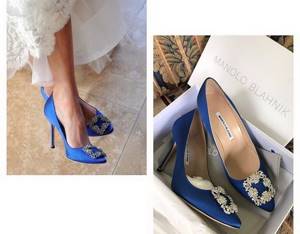
The Manolo Blahnik company successfully combines classics and avant-garde in the design of its shoes.
The brand is famous for its incredibly beautiful and comfortable pumps - a low heel allows you to feel comfortable throughout the day.

Products from Jimmy Choo are the maximum of reliability and durability.
Classic models are universal, and dressy shoes look simply luxurious. This is a stylish brand of high-quality elegant women's shoes made of genuine leather and suede, which produces comfortable shoes for fashionistas of any age.
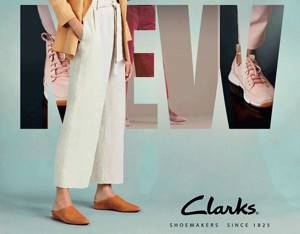
The CLARKS brand has patented several production technologies, thanks to which its products are lightweight, breathable, waterproof and extremely comfortable.
Discreet silhouettes do not prevent the company from gaining momentum due to excellent quality.
Despite the inherent love of the classics among the British, you can also find original solutions among the models from English companies. When choosing shoes from the UK, you can expect sophisticated and stylish options.
How not to buy a fake
You need to buy luxury shoes in specialized stores. Carefully inspect the shoes before purchasing: the materials must be natural, the seams must be neat, and there must be no defects at all.
If you want to understand shoes, read the article about different types of women's shoes.
More on the topic:
- Types of women's shoes
- What shoes to wear with a parka
- Basic shoes for women
- Films about fashion and beauty
German brands
When looking for quality shoes, we don’t always think of German companies. But in Germany there are worthy representatives of the shoe industry.
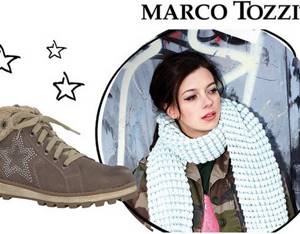
Marco Tozzi focuses on comfort - the designers have developed a shock-absorbing sole that makes every step you take soft and springy.
There are models for narrow and wide feet; every year the brand releases at least 10 new collections.
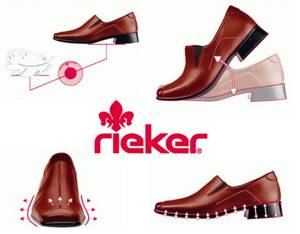
All Rieker brand products have a flexible and incredibly light, but at the same time frost-resistant sole.
Models from Rieker are the best option for everyday wear.
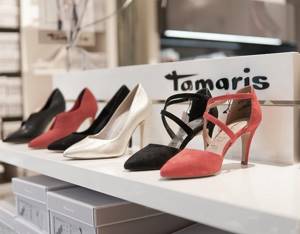
Tamaris company is one of the most popular in Germany.
Russian fashionistas fell in love with this company for its affordable prices and the comfort of its models, even in high heels.
Comfort and reliability are the main principles of German production. Be sure to check out the range of companies from Germany.
Louis Vuitton
History of creation
The Louis Vuitton trading house was opened in 1854 in France, and produced primarily suitcases and traveling bags. It was a family business that is now part of the LVMH conglomerate. The French fashion house began producing a line of shoes in 1998, when the collection included exclusively women's shoes.
What kind of shoes are produced?
In the luxurious Louis Vuitton boutique you can try on elegant stilettos, seductive ankle boots, sophisticated high- and low-heeled sandals, glamorous sneakers, as well as boots and shoes.
Peculiarities
Many Louis Vuitton models have a pattern in the form of the famous brand logo. The color scheme is mostly basic - brown and black. But there are also models of other colors, primarily pink.
Interesting Facts
There is an interesting position in the company. The employee must check the shoes for comfort: just walk in new shoes for 10 days. Dream job…
Price
Sports shoes and mules will cost you at least 500 euros, and the average price for shoes will be 700-800 euros.
arrow_left
The elegance of French shoe design.
arrow_left
Stylish decor.
Russian manufacturers
The rating of Russian quality footwear brands includes companies operating in different price segments. If you want to support a domestic manufacturer, you can choose a pair that you can afford.

The Zenden company wins the hearts of customers with an incredible breadth of assortment , and the affordable cost of goods allows fashionistas to satisfy not only their immediate needs, but also their wildest desires.
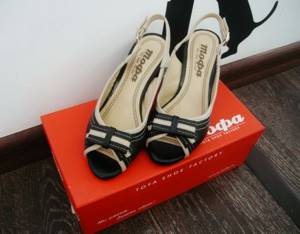
If you value comfort, take a closer look at the products.
Imported raw materials are used in production, European technologies are used, so the quality of shoes is always at its best. A carefully thought out and perfectly executed last will give ease of movement to women of any age.

One of the leaders among brands of very good quality shoes in Russia can be called Tervolina; their shoes are truly durable and reliable.
All materials are hygienic, the shoes look solid, therefore, despite the cost, this brand has many fans.
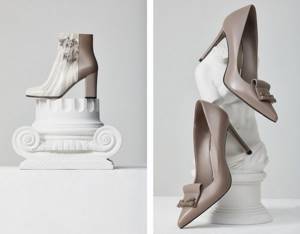
Among budget domestic brands, the Econika brand stands out.
Their models are distinguished by an original fashionable design; the company pays a lot of attention to the design of its sales floors. Young, stylish mothers will be especially pleased with the products of this company - Econika regularly updates its line of “Mom and Daughter” products.
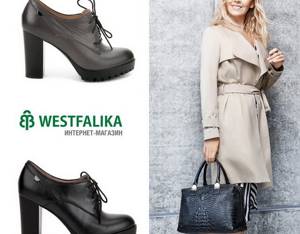
Westfalika is the only Russian manufacturer that cooperates with foreign designers.
Exquisite models are accompanied by high reliability and a comfortable last. For shoe care, Westfalika produces its own line of products.
Now you know which brands are of the highest quality in Russia; branded leather shoes are highly valued by our compatriots.
Stuart Weitzman
History of creation
American Stuart Weitzman began drawing models for his father's shoe company, and then created his own international luxury brand. Stewart is known for creating many of the world's most expensive pairs of shoes.
You might be interested in: What does dark blue go with?
What kind of shoes are produced?
In the boutiques of this brand you can see exquisite high-heeled shoes of different heights and sizes, sandals with heels and wedges, shoes, and boots.
There is also a bridal collection for future brides.
You may be interested in: Emerald color in clothes
Peculiarities
The American brand produces fairly minimalistic models with an almost complete absence of decor.
You may also be interested in: What to wear with a red dress: choosing shoes and accessories
Interesting Facts
In 2002, Stuart Weitzman created “one-of-a-kind” shoes costing over $1,000,000 for American actress Laura Harring, who was nominated for an Oscar. The actress was accompanied by 3 security guards. Stuart Weitzman is still considered a Hollywood red carpet brand.
Another useful article: What colors does sea green go with?
Price
You can consider a pair of American shoes from Stuart Weitzman yours for at least 300 euros.
arrow_left
These diamond shoes are included in the list of the most expensive shoes.
arrow_left
Stars in the creations of the American designer.
Another interesting article: What tights to wear with a gray dress
